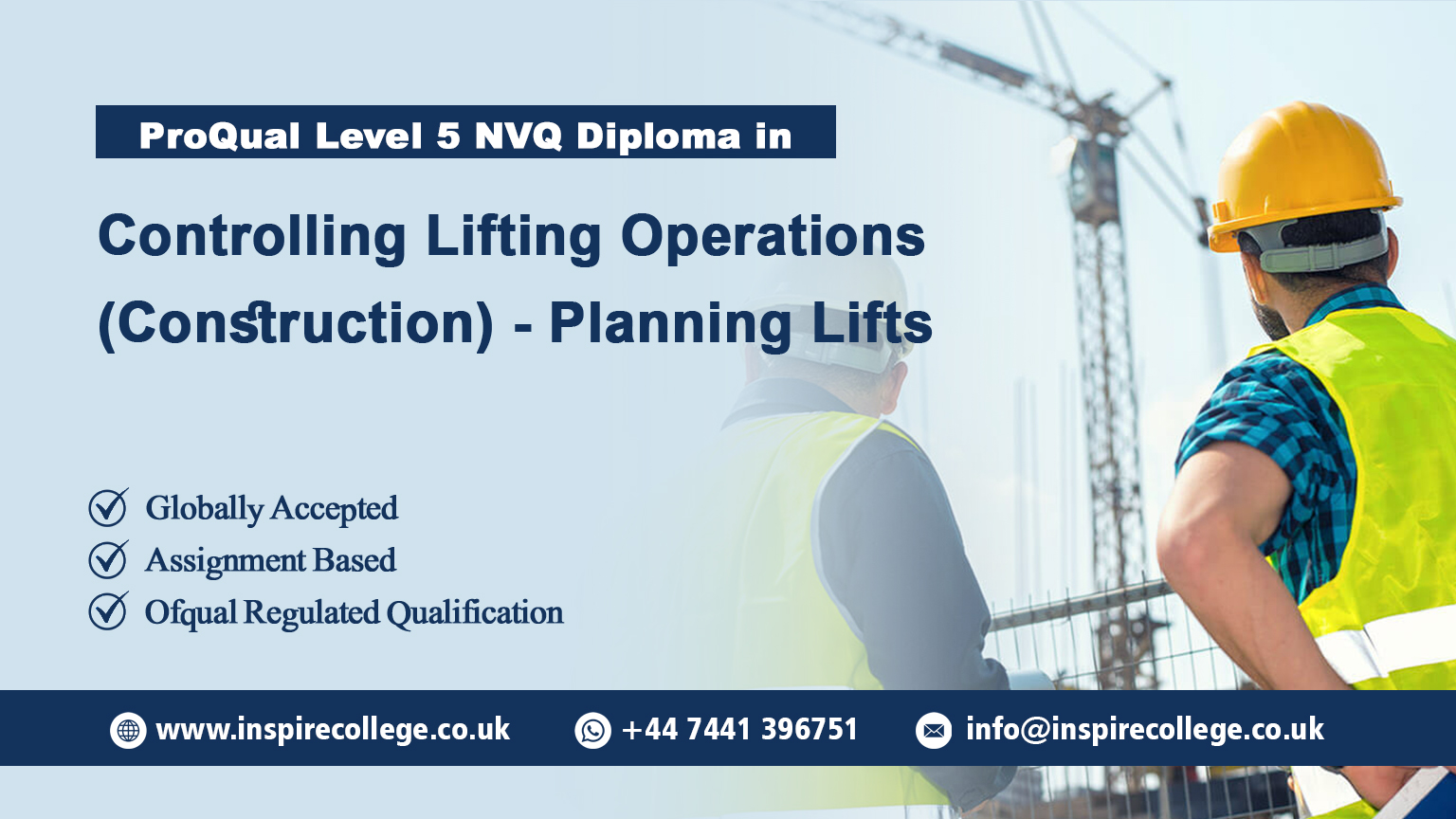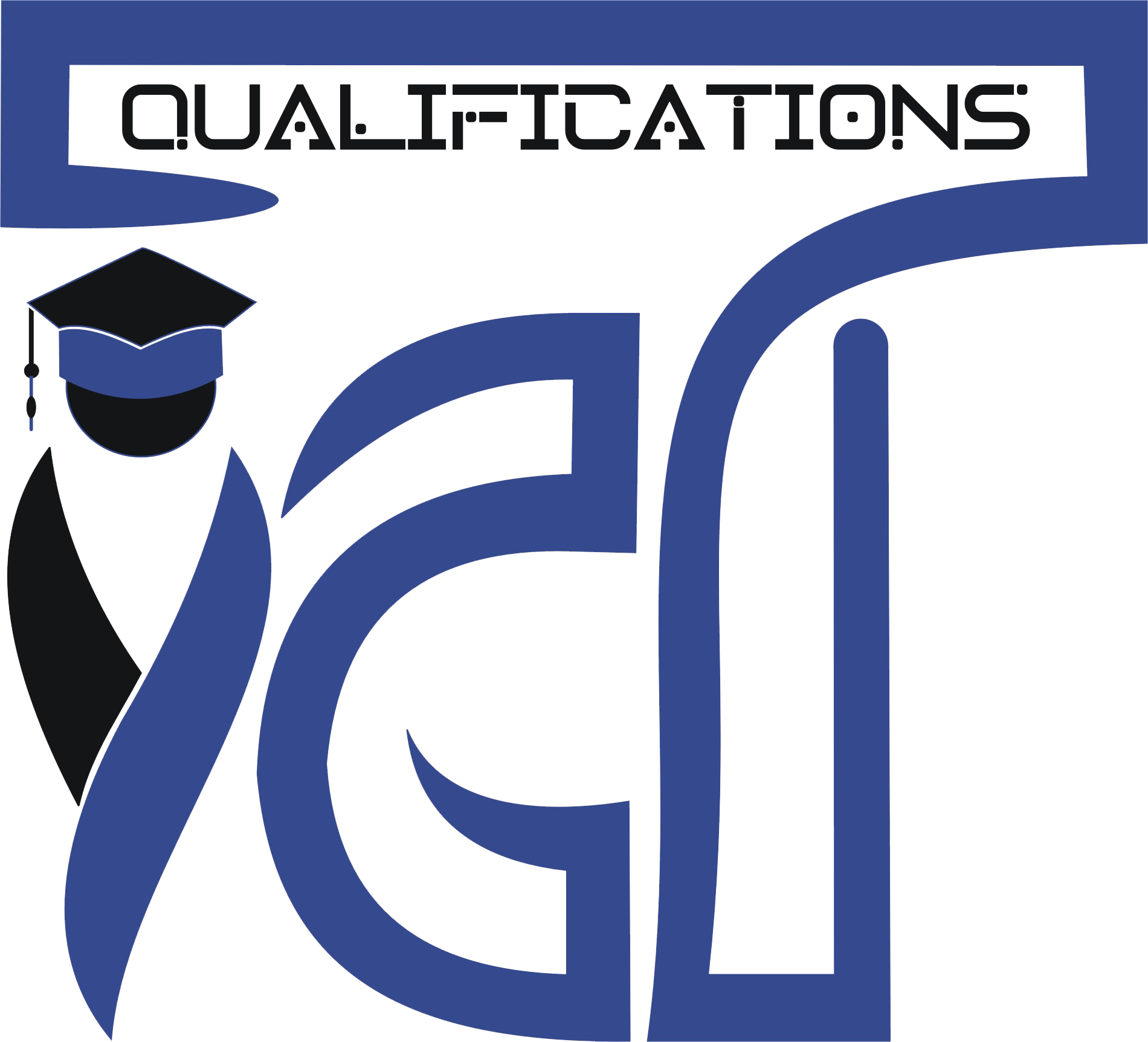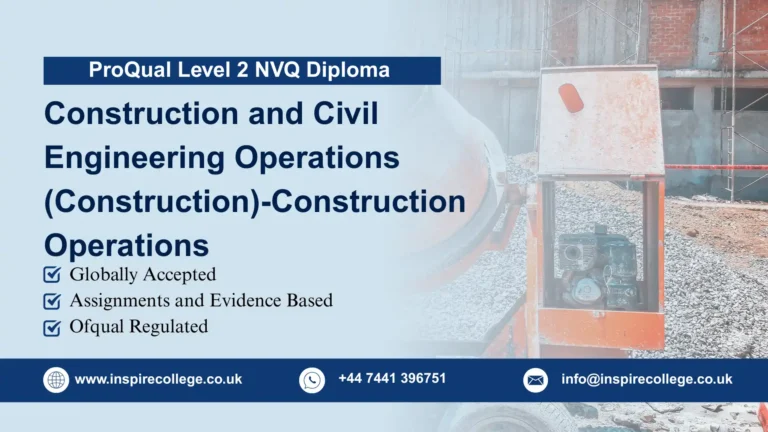
ProQual Level 5 NVQ Diploma in Controlling Lifting Operations (Construction) – Planning Lifts
In the fast-paced construction industry, the ability to effectively plan and control lifting operations is paramount to ensuring safety and efficiency on site. The ProQual Level 5 NVQ Diploma in Controlling Lifting Operations (Construction) focuses on equipping professionals with the advanced skills necessary to oversee complex lifting activities. This qualification is designed for individuals who aspire to take on leadership roles in lifting operations, ensuring they meet industry standards and regulatory requirements.
The ProQual Level 5 NVQ Diploma provides a comprehensive framework for understanding the intricacies involved in planning lifts. Participants will delve into essential topics such as risk assessment, selecting appropriate lifting equipment, and understanding the various factors that influence lift operations. By engaging in both theoretical learning and practical assessments, candidates will develop the expertise needed to manage lifting operations safely and efficiently.
One of the key benefits of this diploma is its emphasis on practical application. Candidates will engage in real-world scenarios where they can apply their knowledge of lifting operations. This hands-on approach ensures that participants not only learn the theoretical aspects but also gain the confidence to execute lifting plans effectively on-site.
The ProQual Level 5 NVQ Diploma is particularly suited for professionals already working in the construction sector, including site managers, lifting supervisors, and experienced operatives looking to enhance their qualifications. This diploma is an invaluable asset for those seeking to formalize their skills and take on more responsibility within their organizations.
Completing the ProQual Level 5 NVQ Diploma in Controlling Lifting Operations not only boosts career prospects but also plays a crucial role in promoting workplace safety. By equipping professionals with the necessary knowledge and skills, this qualification helps reduce the risk of accidents and enhances overall project efficiency.
The ProQual Level 5 NVQ Diploma in Controlling Lifting Operations (Construction) is an essential qualification for those aiming to excel in managing lifting operations within the construction industry. By pursuing this diploma, participants will gain the expertise needed to lead safe and effective lifting activities, ultimately contributing to the successful execution of construction projects while ensuring compliance with industry standards. This qualification not only enhances employability but also opens doors to further career advancement opportunities in a vital sector of the construction industry.
- Relevant Experience: Applicants should have substantial experience in the construction industry, particularly in roles related to lifting operations, site management, or supervisory positions.
- Existing Qualifications: While specific formal qualifications are not mandatory, having a Level 4 qualification in a related field, such as construction management or health and safety, is advantageous.
- Understanding of Health and Safety: Candidates should demonstrate a solid understanding of health and safety regulations as they pertain to lifting operations.
- Employer Support: A letter of support or endorsement from an employer or supervisor is often required, confirming the applicant’s current role and suitability for the course.
- Assessment Readiness: Candidates must be prepared to undergo assessments that evaluate both their theoretical knowledge and practical skills related to lifting operations.
Mandatory Units
The ProQual Level 5 NVQ Diploma in Controlling Lifting Operations (Construction) – Planning Lifts, to achieve the qualification candidates must complete ALL of the Mandatory units.
Mandatory Units
| Unit Title | Unit Level | GLH |
| Developing and maintaining good working relationships in the workplace | 3 | 27 |
| Planning lifting activities in the workplace | 5 | 120 |
| Planning and establishing safety, health, welfare and environmental systems for lifting operations in the workplace | 5 | 110 |
| Planning work activities and resources to meet project requirements in the workplace | 4 | 50 |
| Evaluating and confirming work methods in the workplace | 7 | 30 |
| Planning the preparation of the site for the project in the workplace | 7 | 50 |
| Identifying, allocating and planning the deployment and use of plant, equipment or machinery in the workplace | 6 | 20 |
ProQual Level 5 NVQ Diploma in Controlling Lifting Operations (Construction) – Planning Lifts
Developing and maintaining good occupational working relationships in the workplace
- Develop, maintain and encourage working relationships to promote good will and trust.
- Inform relevant people about work activities in an appropriate level of detail, with the appropriate level of urgency.
- Offer advice and help to relevant people about work activities and encourage questions/requests for clarification and comments.
- Clarify proposals with relevant people and discuss alternative suggestions.
- Resolve differences of opinion in ways that minimise offence and maintain goodwill, trust and respect.
Planning lifting activities in the workplace
- Confirm work requirements from information when planning lifting activities using lifting equipment.
- dentify and review influencing factors and guidance material about the work environment and resources.
- Establish methods of work by arranging, planning, assessing and accounting for all influencing factors.
- Amend work methods to take account of changing circumstances whilst maintaining requirements of the lifting activity.
- Communicate work methods to people involved in the lifting activity.
- Prepare and record lift plans, work methods and schedules and negotiate and agree them with decision makers.
- Apply a range of engineering-based calculations to inform planning.
Planning and establishing safety, health, welfare and environmental systems for lifting operations in the workplace
- Identify and recommend actions for improving the safety, health, and welfare of people affected by the lifting operation.
- Promote a culture of safety, health, welfare and environmental awareness.
- Establish procedures that ensure lifting team responsibilities and competencies are fully applied to the lifting operation.
- Ensure the safety, health, welfare and environmental protection equipment and resources comply with current legislation
- Establish and implement risk assessments and method statements and lessons learned to prevent recurrence.
- Review safety, health, welfare and environmental protection systems on completed lifting activities in accordance with organisational and statutory requirements.
- Assess the significance of environmental factors as they affect the lifting operation and take appropriate action.
Planning work activities and resources to meet project requirements in the workplace
- Organise work activities to make the most efficient use of the available resources.
- Recommend alternative methods, resources and systems to meet programmes and schedules.
- Obtain clarification or advice from various sources where the resources required are not available.
- Examine work activities against project data or operational data and the requirements of external factors.
- Update existing programmes and schedules of planned activities and inform stakeholders.
- Implement systems to monitor and record works against programmes and schedules.
Evaluating and confirming work methods in the workplace
- Evaluate project or operational data in order to identify work methods
- Obtain additional information from other sources in cases where the available project data is insufficient.
- Identify work methods which will make the best use of resources and materials and meets project and current organisational requirements.
- Evaluate identified work methods against technical, environmental and project criteria and select appropriate methods.
- Ensure method statements and risk assessments are current, accurate, agreed and acceptable to all stakeholders.
- Recommend and promote the selected work method for the project.
Planning the preparation of the site for the project in the workplace
- Assemble and review information used in the preparation of the project plan, clarify information which is not clear and update it for production planning purposes.
- Identify factors for consideration, record them and distribute them to people who may be affected.
- Plan for traffic management, identifying access and egress points for the site and works which are safe, convenient and which minimise disruption.
- Organise the resources required for the preparation of site operations.
- Give accurate details about the proposed work to the utility and emergency services.
- Make arrangements for adequate site safety and welfare, reviewing as work progresses.
- Implement procedures and arrangements for environmental protection and security.
- Implement and record the procedures and arrangements for temporary works.
- Plan the site or area layout for operational purposes and pass information about the plans to the people on the site.
- Ensure notices to people, which provide information and comply with current organisational requirements.
- Ensure the notices are placed correctly and implement a maintenance schedule.
Identifying, allocating and planning the deployment and use of plant, equipment or machinery in the workplace
- Ensure that the specification of the selected plant, equipment or machinery meets the needs of the project before deployment.
- Confirm that the plant, equipment or machinery to be deployed complies with current legislation and will be set up, operated and maintained by competent people.
- Implement a system to update the deployment and allocation of plant, equipment or machinery, and operators, as the project progresses, or changes occur.
- Identify hazards, assess and mitigate risks arising from the use of plant, equipment or machinery and implement measures that protect people and the environment.
- Ensure that plant, equipment or machinery operations are planned, appropriately supervised and conducted in accordance with current legislation.
- Ensure the suitable storage, servicing and maintenance of plant, equipment or machinery has been arranged to meet organisational requirements.
- Identify and record the competency requirements for supervisors, operators and users of plant, equipment or machinery.
- Promote and record opportunities to suggest improvements in plant operations.
- Ensure that plant, equipment or machinery which is no longer needed is returned or removed and records are maintained.
The ProQual Level 5 NVQ Diploma in Controlling Lifting Operations (Construction) – Planning Lifts is tailored for a range of professionals within the construction industry. This course is ideal for:
- Lifting Supervisors: Individuals currently in supervisory roles who are responsible for overseeing lifting operations and ensuring safety protocols are followed.
- Site Managers: Professionals managing construction sites who need to integrate effective lifting strategies into overall project management.
- Experienced Operatives: Skilled workers with significant experience in lifting operations looking to formalize their skills and advance their careers into supervisory or managerial positions.
- Health and Safety Officers: Those tasked with ensuring compliance with health and safety regulations related to lifting and handling operations.
- Project Managers: Professionals overseeing construction projects who require a thorough understanding of lifting operations to ensure efficient project execution.
- Aspiring Managers: Individuals aiming to move into management roles within the construction industry, particularly those focused on lifting and handling operations.
This diploma equips participants with the advanced skills and knowledge necessary for effective lift planning and management, making it a valuable asset for anyone looking to enhance their expertise and career prospects in the construction sector.
Register Now
FAQs for ProQual Level 5 NVQ Diploma in Controlling Lifting Operations (Construction) – Planning Lifts






